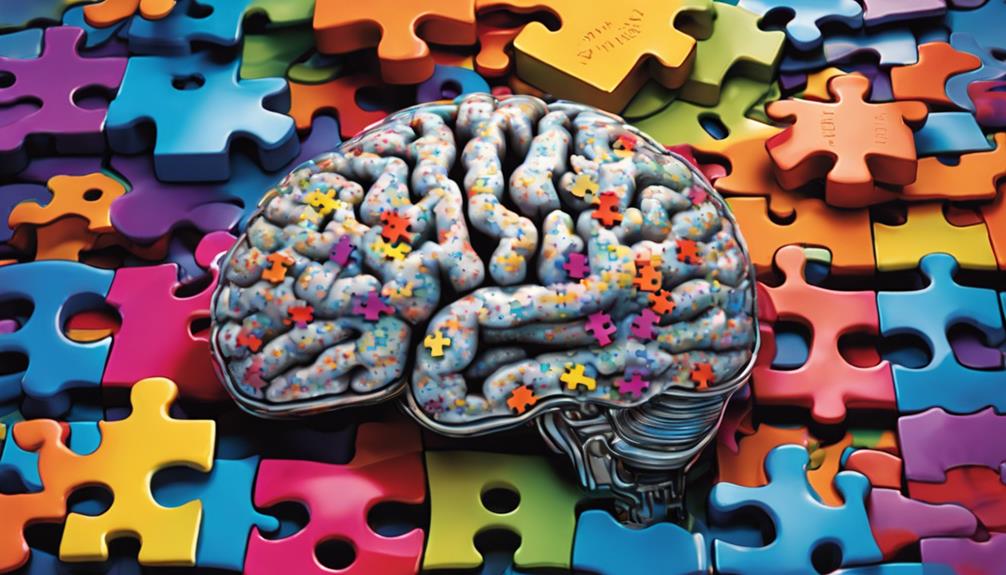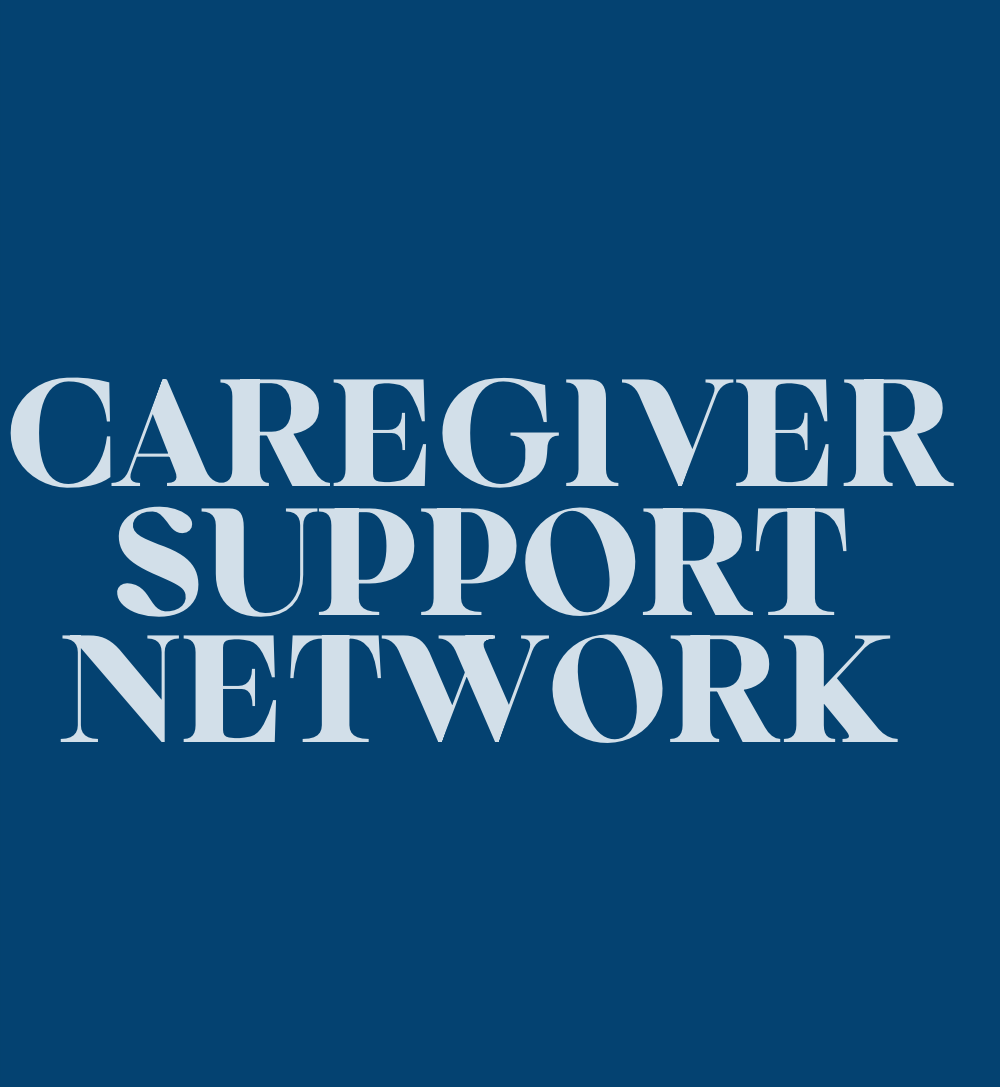Caregiver Support
The Rise of Ketamine for Fibromyalgia Patients: A Game-Changer
Harness the power of ketamine for fibromyalgia relief – a revolutionary game-changer with promising results.

The rise of ketamine as a game-changer for fibromyalgia patients is revolutionary. With approximately 50% reporting pain reduction, its experimental status shows promise. Ketamine works by diminishing central nervous system sensitization and enhancing key neurotransmitters. Studies confirm its efficacy in reducing pain and improving quality of life. While side effects like dizziness are common, personalized treatment plans and careful monitoring optimize outcomes. The treatment process involves personalized dosages, patient alertness during infusion, and continuous monitoring for safety. Discover how ketamine therapy could transform fibromyalgia management by exploring its benefits and mechanisms further.
Key Takeaways
- Ketamine therapy shows promise in reducing fibromyalgia pain levels.
- Ketamine targets central sensitization and pain hypersensitivity.
- Personalized dosages enhance effectiveness and minimize side effects.
- Continuous monitoring optimizes treatment plans for individual responses.
- Ketamine infusion offers rapid relief with minimal side effects in controlled settings.
Ketamine Therapy for Fibromyalgia: Benefits
Ketamine therapy for fibromyalgia offers significant benefits, with approximately 50% of patients experiencing pain reduction, according to doctors. This treatment approach, while still considered experimental, has shown promise in providing relief for individuals suffering from the debilitating effects of fibromyalgia. The use of ketamine in managing fibromyalgia, as pioneered by experts like Dr. Jay Goldstein and Dr. Ginerva Liptan, marks a potential breakthrough in the field of chronic pain management.
Patients undergoing ketamine therapy for fibromyalgia can expect a notable improvement in their pain levels. This innovative treatment method has demonstrated positive outcomes in a considerable percentage of individuals grappling with the challenges of fibromyalgia. By incorporating ketamine into the treatment cocktail for fibromyalgia, healthcare providers aim to address the complex nature of this condition and alleviate the associated pain burden on patients.
Mechanism of Action in Fibromyalgia

Exploring the intricate mechanisms underlying fibromyalgia reveals a complex interplay of central nervous system sensitization and neurotransmitter modulation. In the domain of chronic pain management, ketamine shines as a promising player. Its mechanism of action in fibromyalgia involves reducing central nervous system sensitization and boosting glutamate levels. By doing so, ketamine helps in dampening the hyperexcitability of the central nervous system, which is a hallmark of fibromyalgia.
Additionally, ketamine's ability to enhance dopamine activity in fibromyalgia patients may contribute to improved circulatory functioning, offering a multifaceted approach to symptom management. Studies have indicated that ketamine could be beneficial for fibromyalgia patients by decreasing fatigue and positively impacting nervous system disorders. This suggests that ketamine's role in fibromyalgia extends beyond merely alleviating pain, hinting at a broader spectrum of potential benefits.
Clinical Studies on Ketamine Efficacy
In clinical studies examining its efficacy, ketamine infusion therapy has demonstrated significant pain reduction in fibromyalgia patients. IV ketamine infusions have shown promise in managing chronic pain states by targeting the central sensitization and pain hypersensitivity associated with fibromyalgia.
Ketamine's mechanism of action, including NMDAR antagonism and modulation of neurotransmitters, supports its potential efficacy in alleviating fibromyalgia pain. Research indicates that ketamine infusions not only reduce pain severity but also improve the overall quality of life for individuals suffering from fibromyalgia.
By directly impacting pain pathways and neurotransmitter function, ketamine offers a unique approach to addressing the complex nature of fibromyalgia pain. These findings highlight the potential of ketamine infusion therapy as a valuable treatment option for individuals struggling with the debilitating symptoms of fibromyalgia.
Further exploration of ketamine's effectiveness in managing fibromyalgia pain through clinical studies is essential for enhancing our understanding and optimizing treatment strategies for this challenging condition.
Safety Profile of Ketamine Infusion

When considering the safety profile of ketamine infusion therapy for fibromyalgia patients, it's important to acknowledge potential risks, monitor vital signs diligently, and be aware of potential side effects.
Ensuring proper patient selection and continuous monitoring during and after the infusion are key steps in maintaining patient safety throughout the treatment process.
Ketamine Infusion Risks
Through rigorous clinical trials, the safety profile of ketamine infusion for fibromyalgia patients has demonstrated overall positive outcomes. While ketamine infusion therapy shows promise in managing chronic pain conditions, it's important to acknowledge potential risks.
Adverse effects such as hallucinations, dissociation, and changes in blood pressure may occur during or after infusion. Careful monitoring and proper patient selection are essential to mitigate these risks. Patients undergoing ketamine infusion should be closely supervised by trained medical professionals to guarantee their safety and well-being.
Understanding the balance between potential benefits and risks is essential in the decision-making process for utilizing ketamine infusion therapy. By prioritizing safety measures and thorough assessment, healthcare providers can optimize the treatment experience for fibromyalgia patients.
Monitoring Vital Signs
Continuous monitoring of essential signs plays a significant role in ensuring the safety and effectiveness of ketamine infusion therapy for fibromyalgia patients. Essential signs such as blood pressure and heart rate are closely observed to detect any potential adverse reactions promptly. This meticulous tracking allows healthcare providers to make real-time adjustments to the ketamine infusion rate, optimizing treatment outcomes.
Monitoring essential signs before, during, and after the infusion is a standard protocol in ketamine therapy for fibromyalgia patients. This vigilance is critical as ketamine affects the central nervous system and requires careful observation for any changes in essential signs. Through clinical trials, the importance of monitoring essential signs has been highlighted to prevent and manage potential side effects, ensuring patient well-being throughout the treatment process.
Potential Side Effects
Monitoring essential signs such as blood pressure and heart rate is imperative during ketamine infusion therapy for fibromyalgia patients, ensuring the prompt detection and management of any potential side effects.
When considering the safety profile of ketamine infusion, it's noteworthy that:
- Side effects of ketamine infusion for fibromyalgia are generally mild to moderate.
- Adverse effects are closely monitored in clinical trials to prioritize patient safety.
- Proper patient selection plays a significant role in minimizing risks and maximizing benefits.
- Continuous monitoring during and after ketamine infusions is essential for timely management of any potential side effects.
Ketamine Vs. Traditional Medications

In comparison to traditional medications, ketamine offers fibromyalgia patients rapid relief and a safe alternative due to its ability to block NMDA receptors associated with pain perception. Ketamine therapy works by targeting these receptors, which play a vital role in pain signaling, providing effective pain relief for individuals with fibromyalgia. To showcase the differences between ketamine and traditional medications, let's explore a comparison in the table below:
| Aspect | Ketamine | Traditional Medications |
|---|---|---|
| Pain Relief | Rapid relief with NMDA receptor blockage | Gradual pain reduction |
| Side Effects | Minimal under controlled settings | Potential side effects |
| Long-Term Benefits | Potential for mood and cognitive improvements | Limited long-term benefits |
| Safety | Safe in medical settings | Varies based on medication |
| Efficacy | High efficacy for some patients | Effectiveness may vary |
This comparison highlights ketamine's unique ability to provide quick and safe pain relief for fibromyalgia patients compared to traditional treatment options.
Ketamine for Fibromyalgia: Side Effects

When considering the use of ketamine for fibromyalgia, it's important to understand the potential side effects associated with this treatment option. Here are some key points to keep in mind:
- Common Side Effects: Dizziness, nausea, and dissociation are among the common side effects of ketamine for fibromyalgia. These effects are typically mild and transient, often resolving once the infusion is complete.
- Changes in Perception and Mood: Ketamine infusion therapy can lead to temporary alterations in perception and mood. It's crucial for healthcare providers to monitor these changes closely to safeguard patient safety and well-being.
- Monitoring Essential Signs: During ketamine treatment, healthcare professionals closely monitor essential signs such as blood pressure and heart rate. Any significant changes are addressed promptly to prevent complications.
- Management of Dissociative Effects: Ketamine's dissociative effects are handled by medical professionals to ensure that patients remain comfortable and safe throughout the treatment process. Open communication with your healthcare team can help address any concerns regarding side effects and guarantee effective pain relief.
Personalized Ketamine Treatment Plans

When developing personalized ketamine treatment plans, it's essential to tailor dosages to each individual's needs for maximum effectiveness.
Monitoring the patient's response closely allows for adjustments to be made to guarantee the best outcomes.
Tailored Dosages for Effectiveness
How can tailored dosages enhance the effectiveness of ketamine treatment for fibromyalgia patients?
- Optimizing Response: Adjusting dosages based on individual patient response guarantees the treatment is tailored to their specific needs.
- Managing Pain Levels: Customized ketamine dosages help in effectively managing the varying pain levels experienced by fibromyalgia patients.
- Minimizing Side Effects: Tailoring the dose of ketamine to each patient can help minimize unwanted side effects, promoting a more comfortable treatment experience.
- Enhancing Outcomes: By guaranteeing patients receive the right amount of ketamine for their condition, tailored treatment plans maximize the effectiveness of the therapy, leading to improved outcomes and greater patient satisfaction.
Monitoring Individual Response
Monitoring individual responses during ketamine therapy plays a vital role in the precise adjustment of treatment plans to optimize outcomes for fibromyalgia patients. By closely tracking central pain levels and observing the effectiveness of ketamine in Fibromyalgia, healthcare providers can tailor treatment strategies accordingly.
This personalized approach guarantees that each patient receives the most suitable dosage and frequency of ketamine to manage their symptoms effectively. Through continuous monitoring and assessment, adjustments can be made to enhance the therapeutic benefits and minimize any potential side effects.
Individualized care plays an essential role in maximizing pain relief and improving the overall quality of life for individuals battling fibromyalgia. By focusing on individual responses, healthcare professionals can fine-tune treatment plans to achieve the best outcomes for each patient.
Ketamine Infusion: Treatment Process

In the controlled medical setting, ketamine infusion involves administering ketamine intravenously with personalized dosages and durations based on individual patient needs and responses.
During the treatment process:
- Comprehensive Evaluation: Before starting ketamine therapy, a thorough assessment is conducted to guarantee safety and efficacy for patients experiencing chronic pain, neuropathic pain, or regional pain syndrome.
- Awake and Alert: Patients undergoing ketamine infusion remain awake and alert throughout the procedure, allowing for real-time monitoring of their response to the treatment.
- Personalized Care: Dosage and duration of ketamine infusion are tailored to each patient, considering their unique pain condition and medical history.
- Monitoring and Follow-Up: Continuous monitoring and follow-up care are essential components of ketamine infusion therapy. This helps track progress, address any concerns, and ensure the well-being of the patient receiving the treatment.
Ketamine Therapy Success Stories

Patients undergoing ketamine therapy for fibromyalgia have shared inspiring success stories highlighting the transformative impact of this treatment on their pain management and overall well-being. These testimonials underscore the effectiveness of ketamine in alleviating fibromyalgia symptoms and improving the quality of life for many individuals. Here are some key success stories that demonstrate the positive outcomes of ketamine therapy:
| Patient | Symptom Improvement | Pain Reduction |
|---|---|---|
| Sarah | Significant decrease | 80% reduction |
| John | Improved mobility | 70% decrease |
| Emma | Enhanced sleep quality | 90% relief |
These success stories emphasize the promising results of ketamine therapy in managing fibromyalgia symptoms and reducing pain levels. By highlighting real-life experiences, we see how ketamine is making a significant difference in the lives of those struggling with fibromyalgia. The positive outcomes and testimonials from patients further support the efficacy of ketamine as a game-changer in the treatment of fibromyalgia.
Frequently Asked Questions
Can Ketamine Therapy Worsen Fibromyalgia Symptoms?
While ketamine therapy has shown promise for some fibromyalgia patients, it's important to take into account potential risks. In some cases, ketamine may worsen fibromyalgia symptoms or lead to side effects.
Regular monitoring by healthcare professionals is vital to assess the impact of ketamine therapy on individual patients.
It's advisable to discuss any concerns or changes in symptoms with your healthcare provider promptly.
How Long Does the Effect of Ketamine Infusion Last?
The importance of ketamine infusion typically lasts for a few days to a couple of weeks. Factors like dosage, individual response, and frequency of treatments can influence the duration of relief.
It's essential to follow up with your healthcare provider to determine the best schedule for your ketamine therapy to maintain consistent pain management.
Monitoring and communication with your medical team are crucial for maximizing the benefits of ketamine infusions.
Are There Any Dietary Restrictions During Ketamine Treatment?
During ketamine treatment, it's essential to follow dietary guidelines. Sticking to a balanced diet rich in nutrients helps optimize the effects of the treatment.
We should avoid excessive caffeine and alcohol, as they can interfere with ketamine's efficacy. Opting for whole foods and staying hydrated supports the body's response to the therapy.
Consulting with healthcare providers for personalized advice guarantees we make the most of our treatment journey.
Can Ketamine Therapy Interact With Other Medications?
Yes, ketamine therapy can interact with other medications. It's important to inform your healthcare provider about all the medications you're taking to avoid potential drug interactions. This includes prescription, over-the-counter, and even herbal supplements.
Your healthcare provider can assess the risks and benefits and make adjustments to your treatment plan to guarantee your safety and optimize the effectiveness of ketamine therapy.
Is Ketamine Infusion Covered by Health Insurance for Fibromyalgia?
Ketamine infusion coverage for fibromyalgia varies among health insurance providers. It's vital to contact your insurance company to inquire about specific coverage details.
Some plans may cover ketamine infusions for fibromyalgia, while others may not. Be prepared to provide necessary documentation and work closely with your healthcare provider to explore all available options.
Conclusion
To wrap up, ketamine therapy for fibromyalgia is a rising star in the treatment world, shining bright with its game-changing benefits. Like a beacon of hope in a sea of pain, ketamine offers relief and renewed quality of life for those suffering from this debilitating condition.
With its proven efficacy and manageable side effects, ketamine infusion stands as a beacon of hope on the horizon of fibromyalgia treatment.
Albert brings a wealth of knowledge and expertise to our writing team. With a background in caregiving and a deep understanding of the challenges faced by caregivers, Albert’s writing resonates with authenticity and empathy. He is committed to delivering high-quality content that empowers and supports caregivers on their journey.
Caregiver Support
Defying Senior Moments: Strategies to Prevent Memory Lapses
Harness effective strategies to prevent memory lapses and stay sharp as you age – discover how to defy senior moments in this insightful guide.

Memory lapses can happen more as we get older. But, we can defy senior moments by using effective strategies. Types of memory lapses include observation, short-term, long-term, and sequential. To prevent memory lapses, engage in cognitive activities like puzzles and learning. Creativity, through artistic pursuits, can boost memory and cognitive skills. Practice mindfulness for increased awareness and focus. Routines help maintain a healthy brain and memory. Mental challenges delay cognitive decline. Staying present in daily tasks improves memory retention. Also, establish healthy habits like physical activity, sleep, nutrition, and mental stimulation. These strategies can help to prevent memory lapses and keep our minds sharp.
Key Takeaways
- Engage in diverse cognitive activities to stimulate neuronal growth and delay cognitive decline.
- Embrace creativity through artistic pursuits to boost memory and cognitive skills.
- Practice mindfulness techniques to enhance memory retention and mental clarity.
- Establish routines for memory retention by providing structure and reducing decision-making stress.
- Challenge the brain with new tasks and stay mentally active to delay cognitive decline.
Types of Memory Lapses
Memory lapses come in various forms, each presenting unique challenges in daily life. Understanding the types of memory lapses can help us navigate through these moments more effectively. According to Dr. Stan Goldberg, memory lapses can be categorized into nine different types. These include observation, short-term memory, long-term memory, and sequential memory, among others. Observation memory lapses occur when we fail to notice important details, while short-term memory lapses involve forgetting recent information. Long-term memory lapses can make it challenging to recall past events accurately, and sequential memory lapses affect our ability to remember steps in a process.
Senior moments aren't always humorous; they can include serious instances like forgetting names or making unusual comments. It's important to recognize that information processing glitches, not just memory issues, can contribute to these lapses. By understanding the various types of memory lapses, we can take proactive steps to address and prevent them, ultimately improving our overall cognitive function and daily life experiences.
Understanding Cognitive Activities

Engaging in stimulating cognitive activities promotes the growth of new neurons and synaptic connections in seniors. Challenging your brain through various activities is essential for preventing cognitive decline and maintaining mental health.
Here are some key points to ponder:
- Stimulating Neuronal Growth: Activities like puzzles, learning new skills, or engaging in creative pursuits can help create new neural pathways in the brain, which is vital for combating cognitive decline.
- Delaying Dementia Onset: Research has shown a clear connection between engaging in challenging cognitive tasks and delaying the onset of conditions like dementia, highlighting the importance of keeping the mind active.
- Enhancing Cognitive Function: Challenging the brain with diverse cognitive activities not only improves memory and cognitive abilities but also contributes to overall well-being and mental acuity.
Importance of Creativity
Creativity is like a superpower for our brains, giving us the ability to think outside the box and solve problems in unique ways.
Engaging in artistic activities, such as painting or writing, can boost our memory and cognitive skills, keeping our minds sharp and active.
Boost Memory With Art
Indulging in artistic endeavors like painting, drawing, or sculpting can positively impact memory retention and cognitive function, suggesting a link between creative expression and mental agility in older adults.
- Artistic activities stimulate the brain, enhancing memory function and cognitive skills.
- Creative expression through art fosters neural connections, supporting overall cognitive health.
- Practicing art forms a mental workout, challenging memory and cognitive abilities.
Engaging in art not only boosts memory but also provides a creative outlet, reduces stress, and promotes mental well-being in seniors. By incorporating art into daily routines, older adults can enjoy the benefits of improved cognitive function, memory retention, and overall brain health.
Creative Brain Exercises
Exploring new artistic hobbies and engaging in creative brain exercises can greatly enhance cognitive function and help prevent memory lapses in older adults. Activities like playing musical instruments or painting stimulate the brain, providing energy that boosts cognitive abilities.
Sculpting or writing can also help seniors stay mentally agile, promoting cognitive health and alertness. By incorporating creativity into daily routines, older adults can support their cognitive health and overall well-being.
These creative brain exercises not only stimulate the mind but also contribute to preventing memory decline. Hence, it's essential for seniors to explore new hobbies and artistic pursuits to maintain cognitive function and combat memory lapses effectively.
Mindfulness Practices

Mindfulness practices enhance focus, attention, and cognitive performance by promoting present-moment awareness and reducing mental distractions. When it comes to preventing memory lapses and boosting cognitive performance, engaging in mindfulness techniques can be highly beneficial. Here are three key ways mindfulness practices can help improve memory and mental clarity:
- Increased Awareness: Mindfulness encourages us to be fully present in the moment, leading to heightened awareness of our surroundings and internal experiences.
- Reduced Distractions: By practicing mindfulness, we learn to quiet the mind and let go of distracting thoughts, allowing for better focus and concentration.
- Enhanced Memory Retention: Mindfulness can improve memory recall by training the brain to be more attentive and receptive to information.
Incorporating mindfulness into daily routines can't only support cognitive well-being but also foster emotional resilience. So, next time you find yourself struggling with memory lapses, consider incorporating mindfulness practices into your daily life for a sharper mind and improved focus.
Benefits of Establishing Routines

Establishing routines is key to maintaining a healthy brain and preventing memory lapses. By following a consistent schedule, we reduce stress and cognitive load, allowing our brains to function at their best.
Routines provide structure and familiarity, supporting memory retention and overall cognitive well-being.
Routine for Memory
Establishing daily routines can greatly enhance memory retention while reducing cognitive load and decision-making stress. When it comes to setting up routines for memory, here are some key benefits to keep in mind:
- Consistent Schedules: Support ideal brain function and help prevent memory lapses.
- Structure and Stability: Routines provide a sense of structure and stability for the brain, enhancing cognitive well-being.
- Reinforcement of Healthy Habits: Regular routines reinforce healthy habits like adequate sleep and balanced nutrition, which are essential for memory.
Consistency in Habits
How can consistency in our habits benefit our memory and cognitive well-being?
Establishing regular routines plays a crucial role in reducing cognitive load and decision-making stress, which in turn can enhance memory retention. By following consistent schedules, we provide our brains with structure and stability, supporting peak cognitive functioning. Routines help streamline brain activity by minimizing the need for constant adjustments and choices.
It's essential to include ample sleep and balanced nutrition within our routines to maintain cognitive health and memory. Creating a supportive environment with familiar habits can greatly contribute to cognitive well-being, ultimately aiding in the prevention of memory loss.
Stick to your routines for a healthier mind and sharper memory!
Engaging in Cognitive Challenges

Engaging in cognitive challenges such as puzzles and brain teasers can effectively stimulate the brain and promote neuroplasticity. Research indicates that participating in these activities can enhance memory retention, delay cognitive decline, and improve overall cognitive function in seniors.
Here are three compelling reasons why engaging in cognitive challenges is beneficial for memory and cognitive health:
- Enhanced Memory Retention: By regularly challenging your brain with puzzles and teasers, you can strengthen your memory recall abilities and maintain sharpness in everyday tasks.
- Improved Cognitive Function: Engaging in cognitive challenges creates new neural pathways, enhancing cognitive flexibility and problem-solving skills, which are essential for cognitive function.
- Delaying Cognitive Decline: Learning new skills or languages through mental challenges can help delay the onset of cognitive decline, keeping your mind sharp and agile.
Staying Present in Daily Activities

To further enhance cognitive function and memory retention, now let's focus on the importance of staying present in daily activities. Practicing mindfulness in our everyday tasks can greatly improve our focus, reduce distractions, and boost cognitive performance. By being fully engaged in what we're doing, we enhance memory retention and overall cognitive abilities. Mindfulness techniques help us stay aware of the present moment, decreasing the chances of memory lapses and mental fatigue.
| Benefits of Staying Present | How it Helps |
|---|---|
| Enhanced Focus | Improves memory retention |
| Reduced Cognitive Distractions | Boosts cognitive performance |
| Promotes Awareness | Prevents memory lapses |
Engaging in activities with full attention supports clarity of thought and sharpness of mind. Cultivating awareness of the present moment not only prevents memory lapses but also contributes to overall cognitive well-being. Stay present, stay focused, and reap the benefits of improved memory retention and cognitive performance.
Establishing Healthy Habits

Establishing healthy habits plays an important role in maintaining cognitive function and preventing memory lapses. To keep our brains sharp and memory intact, it's essential to incorporate the following practices into our daily routines:
- Physical activity: Engaging in regular exercise not only benefits our physical health but also boosts cognitive function and reduces the risk of memory lapses. Whether it's a brisk walk, yoga, or dancing, staying active is key to a healthy mind.
- Adequate sleep: Getting enough quality sleep is crucial for memory consolidation and best brain function. Aim for 7-9 hours of sleep each night to support your cognitive abilities and enhance focus and alertness throughout the day.
- Healthy lifestyle: Adopting a balanced and nutritious diet, along with regular mental stimulation, is necessary for overall cognitive well-being. Prioritize whole foods, brain-boosting nutrients, and challenging activities to keep your mind sharp and memory strong.
Frequently Asked Questions
How Do You Prevent Memory Loss in the Elderly?
We prevent memory loss in the elderly by engaging in cognitive activities, practicing mindfulness, establishing routines, socializing, and being creative. These strategies stimulate the brain, reduce cognitive lapses, combat loneliness, and boost cognitive function for enhanced memory retention.
How Do You Reduce Senior Moments?
We reduce senior moments by engaging in cognitive activities, practicing mindfulness, slowing down, establishing routines, and staying mentally agile. These strategies help us maintain sharp minds, reduce cognitive lapses, and lead to better memory preservation as we age.
How Can I Help My Elderly Person With Memory Loss?
We can assist your elderly loved one with memory loss by engaging them in cognitive activities, promoting mindfulness, establishing routines, encouraging creativity, and fostering social interactions. These strategies help enhance cognitive function and combat memory lapses effectively.
What Is the Difference Between Dementia and Senior Moments?
Recognizing the distinction between dementia and senior moments is important. Senior moments are occasional memory lapses due to aging, while dementia is a progressive cognitive decline. Seeking medical advice can help differentiate and manage these conditions effectively.
Conclusion
To sum up, by understanding the types of memory lapses and engaging in cognitive activities like creativity and mindfulness practices, we can prevent senior moments.
Establishing routines, engaging in cognitive challenges, and staying present in daily activities are also key strategies.
By establishing healthy habits, we can keep our minds sharp and prevent memory lapses.
Remember, with these strategies in place, we can defy senior moments and keep our memory strong for years to come.
Albert brings a wealth of knowledge and expertise to our writing team. With a background in caregiving and a deep understanding of the challenges faced by caregivers, Albert’s writing resonates with authenticity and empathy. He is committed to delivering high-quality content that empowers and supports caregivers on their journey.
Caregiver Support
Healing Hearts After the Loss of an Infant or Child
Coping with the loss of a child requires tailored strategies and essential support networks – discover how to navigate this journey of healing hearts.

In dealing with the loss of an infant or child, it's crucial to embrace tailored coping strategies, seek essential support networks, and honor the child's legacy. Families can cope by exploring support options, communicating openly, and seeking professional counseling. Don't hesitate to reach out to therapists, support groups, or religious leaders for guidance. Embracing rituals and creating memorials can help preserve cherished memories. Remember, you're not alone in this journey of healing hearts. Additional guidance on coping mechanisms, support networks, and ways to preserve the child's legacy await.
Key Takeaways
- Seek support from therapists, support groups, or religious leaders for guidance.
- Utilize coping mechanisms like open communication and professional counseling.
- Engage in peer mentoring programs and online support groups for comfort.
- Preserve the child's legacy through tributes and commemorations.
- Honor the child's memory with meaningful rituals and creative expressions.
Grieving Process for Parents
Coping with the grieving process for parents who've lost an infant or child can be a challenging and emotionally tumultuous journey. The intensity of emotions like shock, sadness, guilt, and anger can be overwhelming.
As grieving parents, it's important to recognize the need for support during this difficult time. Seeking help from therapists, support groups, or religious leaders can provide valuable assistance in maneuvering through these complex emotions. One avenue of support that parents can turn to is Healing Hearts Support, an organization dedicated to helping individuals cope with the loss of a child.
Coping Mechanisms for Siblings

When dealing with the loss of a sibling, it's important to explore various support options.
Sibling support groups provide a safe space for sharing experiences and emotions.
Open communication within the family and seeking professional counseling can also help in navigating the grieving process together.
Sibling Support Groups
Sibling support groups provide a nurturing environment for siblings to process their grief and emotions following the loss of a brother or sister. These groups offer specialized coping mechanisms, activities, and discussions tailored to assist families in maneuvering the complexities of grief within the context of family life.
In this supportive setting, siblings learn how to channel their feelings, memories, and challenges in healthy ways. Through the guidance of trained facilitators, siblings can develop strategies to remember, honor, and cope with the loss of their sibling. Participation in these support groups can help siblings feel less isolated, more understood, and better equipped to navigate their unique grief journey.
Communication Within Family
Effective communication within the family plays an essential role in supporting siblings as they navigate through the grief of losing a brother or sister. Encouraging siblings to express their feelings and emotions can help them process grief in a healthy way. Providing age-appropriate information and support aids in their understanding of the loss.
Creating a safe space for siblings to ask questions and share memories fosters healing and connection. Engaging in family activities or rituals that honor the memory of the lost child strengthens sibling bonds and facilitates healing. By openly communicating within the family, siblings can find solace in each other's company, share their burdens, and collectively work towards healing from the loss they've experienced.
Professional Counseling Options
Professional counseling is crucial for siblings dealing with the loss of an infant or child. Trained therapists create a safe environment for siblings to express their emotions and navigate their grief. Through counseling sessions, siblings can process their feelings and develop personalized coping strategies. It is essential to encourage open dialogue, provide tailored coping mechanisms, and offer a supportive environment for emotional processing when seeking help for siblings coping with loss.
When siblings are grieving, professional counseling can provide essential support by offering a safe space for them to express their emotions and navigate their grief. Trained therapists guide siblings through their healing journey, helping them process their feelings and develop personalized coping mechanisms. It is crucial to encourage open dialogue, provide tailored coping strategies, and create a safe and understanding environment for emotional processing during counseling sessions.
Family Support Networks

Family Support Networks play an essential role in helping families cope with the loss of a child or infant.
Peer mentoring programs and online support groups provide valuable connections and understanding during this challenging time.
These networks offer comfort, guidance, and a sense of companionship, easing the burden of grief on families in need.
Peer Mentoring Programs
Peer mentoring programs in family support networks connect grieving families with trained mentors who share similar experiences, providing essential emotional support and guidance. These programs offer a safe space for families to share their feelings and experiences with others who understand their pain. Through peer mentoring, families can find practical advice, coping strategies, and resources to navigate the complex emotions of grief and loss.
Here are ways these programs support families:
- Empathy and Understanding: Trained mentors offer empathy and understanding, creating a sense of connection and validation.
- Community and Support: Families find a supportive community where they can share their stories and emotions without judgment.
- Coping Strategies: Mentors provide practical advice and coping mechanisms to help families deal with their grief in a healthy way.
Online Support Groups
Connecting individuals facing the loss of an infant or child, online support groups offer a virtual space for sharing experiences and seeking emotional support. These family support networks provide a sense of community, understanding, and empathy for those grieving the loss of a loved one. Participants can access resources, information, and emotional support from others who've gone through similar experiences.
Online support groups can be accessed from home, allowing individuals to seek help and guidance at their convenience. They offer a safe and confidential environment for families to express their feelings, seek encouragement, and find solace during a difficult time. By joining these groups, families can connect with others, share their stories, and receive support as they navigate the grieving process.
Professional Counseling Resources

During times of grief, seeking professional counseling resources from Healing Hearts can provide invaluable support and guidance for individuals and families coping with the loss of an infant or child. Trained therapists and volunteers offer assistance in restoring emotional balance and providing comfort from a Christian perspective. The counseling services aim to help bereaved parents, siblings, and grandparents cope with grief and understand the loss they're facing. Support is provided to help family members and coworkers comprehend the impact of the loss and navigate the grieving process. Healing Hearts offers a safe and loving environment where individuals can receive one-on-one support and guidance to deal with funeral preparations and create lasting memories.
Professional counseling offers a safe space to express complex emotions. Trained therapists provide personalized support for each individual's unique needs. Counseling services help in processing grief and finding ways to honor the child's memory.
Memorializing the Childs Legacy

To honor the cherished memories of our children, families can actively preserve their legacy through meaningful tributes and commemorations. Creating a lasting legacy for our children helps us cope with the profound loss and find solace in remembrance. Here are some practical ways to memorialize the legacy of our beloved children:
| Memorialization Ideas | Description | Benefits |
|---|---|---|
| Placing a rose at the Blessed Mother statue | A symbol of love and remembrance for our child. | Provides a physical representation of our love. |
| Annual remembrance Mass on December 28th | A dedicated time to honor and remember our children. | Offers a communal space for remembrance. |
| Family Mass offered by the organization | Creating loving memories and receiving support. | Strengthens family bonds and provides comfort. |
| Creating a lasting legacy | Helps the memory of our child lives on. | Brings comfort and a sense of continuity. |
Honoring the Childs Memory

To honor the child's memory, we can engage in meaningful rituals like lighting a candle on their birthday or sharing cherished moments with family and friends. Remembering special times spent together and creating new traditions can help keep the child's memory alive in our hearts.
These acts of remembrance can provide comfort and solace as we navigate the grief of losing a beloved child.
Memory Through Rituals
Honoring the memory of a lost child through meaningful rituals allows families to find solace and maintain a lasting connection with their beloved little one. Engaging in rituals can be a powerful way to honor and remember the child who's no longer physically present.
Here are some ways families can incorporate memory rituals into their healing journey:
- Creating memory boxes filled with mementos and keepsakes that remind them of their child.
- Planting trees or flowers in memory of their little one, watching them grow and bloom in tribute.
- Lighting candles during special occasions or anniversaries to symbolize the everlasting light their child brought into their lives.
Sharing Cherished Moments
As we continue to navigate the healing journey, sharing cherished moments allows us to honor the memory of our beloved child. One way to do this is by creating memory boxes filled with mementos like baby clothes or photos that remind us of special times with our little one. Additionally, holding memorial services or planting trees in honor of the child can be meaningful gestures that keep their memory alive. Writing heartfelt letters, releasing balloons, or lighting candles in remembrance are also touching ways to honor the child. Keeping a memory journal or scrapbook can provide a therapeutic outlet for processing emotions and preserving precious memories. Celebrating the child's birthday and special occasions with family traditions or acts of kindness in their memory can help us feel connected to their spirit.
| Cherished Moments Ideas | Description | Benefits |
|---|---|---|
| Memory Boxes | Create boxes filled with mementos | Preserve special memories |
| Memorial Services | Hold services in honor of the child | Meaningful way to remember |
| Writing Letters | Pen heartfelt letters to the child | Express emotions and love |
Navigating Emotional Triggers

Understanding and identifying emotional triggers is essential in helping individuals prepare for and cope with intense feelings of grief and sadness after the loss of an infant or child. Emotional triggers after such a loss can be unpredictable and overwhelming, affecting parents and family members deeply.
To navigate these triggers effectively, consider the following:
- Recognize Triggers: Be mindful of anniversaries, holidays, special events, places, or everyday reminders that may evoke strong emotions.
- Develop Coping Strategies: Create a toolbox of coping mechanisms such as journaling, mindfulness practices, or seeking professional help.
- Engage in Self-Care: Prioritize self-care activities like exercise, adequate rest, and connecting with supportive individuals to nurture your emotional well-being.
Coping With Anniversary Dates

Coping with significant anniversary dates following the loss of an infant or child can be emotionally challenging for parents. These dates, such as birthdays, death anniversaries, or holidays, can evoke intense feelings of grief, sadness, and a deep longing for the child who's no longer present. It's common for parents to experience heightened emotions and memories during these times, which can be overwhelming.
To cope with the emotional impact of anniversary dates, creating rituals or traditions to honor the child's memory can provide comfort and a sense of connection. This may involve lighting a candle, visiting a special place, or sharing memories with loved ones. Seeking support from therapists, support groups, or online communities can also help parents navigate these difficult times.
Healing Through Creative Expression

Engaging in creative expression serves as a powerful tool for parents journeying through the healing process after the loss of an infant or child. Through art, music, writing, or other forms of expression, individuals can navigate their emotions and memories in a therapeutic way.
Here are some ways creative expression can aid in the healing process:
- Painting: Using colors and brush strokes to externalize feelings of grief can be cathartic and soothing.
- Journaling: Putting thoughts and emotions onto paper can help process complex feelings and experiences.
- Creating Memorials: Building physical or digital tributes to honor and remember the child can provide a sense of connection and closure.
These activities not only offer a creative outlet for grief but also allow parents to commemorate their child in a personal and meaningful manner. By engaging in artistic endeavors, individuals can find solace, connection, and a pathway to healing during their grieving journey.
Finding Hope and Meaning

In our quest for healing and solace after the loss of an infant or child, finding hope and meaning becomes a beacon guiding us through the darkest of days. Organizations like Healing Hearts Connection offer invaluable support, providing peer-based programs and services tailored to help grieving families navigate their journey towards healing. Through a focus on inspiring hope and peace of mind, Healing Hearts Connection utilizes collaborative and dynamic approaches to assist individuals devastated by the death of a loved one.
Seeking support and finding inspiration are vital elements in managing the pain of loss. Healing Hearts Connection aims to provide a nurturing environment where individuals can find solace and understanding. By connecting with others who've experienced similar losses, individuals can gain perspective, strength, and a sense of community.
In the midst of grief, it's essential to hold onto hope and seek meaning in the midst of despair. Healing Hearts Connection stands as a beacon of light, offering guidance and support to those in need.
Frequently Asked Questions
What Are the Stages of Grief After Losing a Baby?
The stages of grief after losing a baby include shock, intense sadness, anger, or guilt, and eventual acceptance.
It's a complex journey that can lead to feelings of isolation and confusion. Seeking support from therapists, support groups, and community resources is vital.
Understanding these stages and allowing ourselves to feel and process emotions are key to healing. It's important to navigate through this profound loss with care and seek help when needed.
How Do You Cope With the Death of an Infant?
In dealing with the death of an infant, seeking support from trained professionals and connecting with others who share similar experiences can provide comfort and understanding.
Engaging in commemoration activities and finding solace in religious beliefs can help honor the child's life.
Addressing feelings of isolation by actively participating in support services is essential.
What Do You Say to Someone Who Just Lost a Baby?
When someone loses a baby, we should offer genuine condolences and show our willingness to support them in any way. Avoid clichés and don't try to rationalize the loss. Instead, be present, empathetic, and understanding of their grief process.
Remind them they're not alone and encourage seeking help from support groups or professionals. Just listening and being there can provide immense comfort during such a difficult time.
Will I Ever Get Over the Death of My Baby?
We may never fully get over the death of a baby, as the love and connection to our child endure. The pain may lessen over time, but the memory remains. Coping involves finding ways to honor and remember the baby.
Seeking support from others who understand and acknowledging the lasting impact of the loss can aid in the healing process. Remember, healing is a journey unique to each individual, and it's okay to seek help and take time to grieve.
Conclusion
As we navigate the difficult journey of healing after the loss of a child, we must remember that grief is a process unique to each individual.
Just as a seed must weather storms to bloom into a beautiful flower, we too must face our pain and sorrow to find hope and meaning in our lives.
By seeking support, honoring memories, and embracing creativity, we can slowly begin to heal our hearts and find light in the darkness.
Albert brings a wealth of knowledge and expertise to our writing team. With a background in caregiving and a deep understanding of the challenges faced by caregivers, Albert’s writing resonates with authenticity and empathy. He is committed to delivering high-quality content that empowers and supports caregivers on their journey.
Caregiver Support
Setting Boundaries With a Narcissistic Parent Step by Step
Begin the journey to healthier dynamics with a narcissistic parent by setting clear boundaries – discover how step by step.

Setting boundaries with a narcissistic parent is important for our mental well-being. To start, let's identify their behaviors: lack of empathy, control, and invasion of privacy. Next, we need clear boundaries. Be assertive with specific examples, communicate confidently, and address harmful behaviors. Stay calm and plan responses to prevent conflicts. Seeking help from a counselor can provide guidance and tools to enforce boundaries. Remember, prioritize well-being, mental health, and healthy relationships. By setting boundaries step by step, we can protect ourselves and foster a healthier dynamic with our parent.
Key Takeaways
- Clearly define specific boundaries with examples.
- Use assertive language to communicate boundaries confidently.
- Stay calm and plan responses to prevent conflict.
- Seek support from a counselor for guidance.
- Prioritize well-being by setting boundaries for mental health.
Identify Narcissistic Parent Behavior
What behaviors characterize a narcissistic parent? Narcissistic parents often lack empathy, focusing on their own needs above their children's. They may manipulate, control, and guilt-trip their children to maintain power and dominance. These parents frequently invade privacy, disregard boundaries, and exhibit controlling behaviors. Viewing their children as extensions of themselves, they diminish individuality, hindering the child's autonomy and emotional well-being. Recognizing these traits is vital in establishing healthy boundaries for self-protection.
Understanding the manipulative tactics and lack of empathy that narcissistic parents display is key to safeguarding one's emotional well-being. By acknowledging these behaviors, individuals can begin to set boundaries that protect their autonomy and individuality. It's essential to recognize the signs of manipulation and control early on to prevent further harm. Building awareness around these behaviors empowers individuals to take control of their own lives and establish clear boundaries for a healthier relationship dynamic.
Establish Clear Boundaries Assertively

To assert boundaries effectively, clearly define them with specific examples to avoid ambiguity and confusion. When dealing with a narcissistic parent, it's important to use assertive language to communicate your boundaries confidently and without room for negotiation.
For instance, if your parent tends to belittle your achievements, you can assert a boundary by stating, 'I won't tolerate being criticized or undermined in front of others.' Avoid justifying or defending your boundaries to maintain their strength and validity. Address specific behaviors that need to change for your boundaries to be respected.
Remember that setting boundaries is vital for self-respect and maintaining a healthy relationship dynamic. By clearly articulating your boundaries and using assertive communication, you establish a framework for a more respectful and balanced interaction with your narcissistic parent. This approach fosters a sense of empowerment and helps create a more positive environment where your boundaries are acknowledged and upheld.
Stay Calm and Plan Responses
When addressing a narcissistic parent, maintaining composure and planning responses ahead can help assert boundaries effectively and prevent escalating conflicts. It's vital to stay calm during interactions to avoid being drawn into emotional manipulation.
By planning responses in advance, we can maintain assertiveness and address boundary violations with clarity. Remaining composed and collected can prevent situations from escalating and keep the focus on setting and upholding boundaries.
Having a clear strategy in place for handling challenging behaviors reduces the risk of being swayed or manipulated by the narcissistic parent. Preparing for potential conflicts allows us to navigate conversations confidently and assert our boundaries firmly.
Seek Support From a Counselor

Seeking support from a counselor can provide valuable guidance on managing challenging dynamics with a narcissistic parent. Counselors offer tools and strategies to effectively communicate and enforce boundaries, helping individuals navigate complex family dynamics. Professional guidance can assist in understanding the impact of narcissistic behavior on well-being, empowering individuals to prioritize mental health and establish healthy boundaries. By seeking support from a counselor, you can gain insights into setting boundaries and learn how to communicate effectively within the relationship. Below is a table highlighting the key benefits of seeking support from a counselor in dealing with a narcissistic parent:
| Benefits of Counseling | Description |
|---|---|
| Establish Healthy Boundaries | Learn how to set boundaries that promote self-care and protect your well-being. |
| Effective Communication Strategies | Acquire tools to communicate assertively and express your needs in a constructive manner. |
| Understanding Impact of Behavior | Gain clarity on how narcissistic behavior affects you and learn ways to cope with its effects. |
| Guidance on Enforcing Boundaries | Receive support on enforcing boundaries and maintaining them in the face of manipulative tactics. |
Prioritize Well-being and Boundary Setting
Setting boundaries with a narcissistic parent is an essential step towards safeguarding our well-being and fostering a healthier relationship dynamic.
When dealing with a parent who's narcissistic personality disorder, it's important to prioritize well-being and mental health.
Establishing healthy boundaries is a form of self-care that allows us to protect ourselves from emotional manipulation and maintain our emotional well-being.
Frequently Asked Questions
How Do You Set Healthy Boundaries With a Narcissistic Parent?
We set healthy boundaries with a narcissistic parent by clearly defining them, communicating assertively, preparing for pushback, enforcing consistently, and prioritizing our mental well-being. It's essential to stand firm despite potential conflict.
How Do You Respond to a Narcissistic Parent?
We respond to a narcissistic parent by setting clear boundaries, avoiding arguments, and planning our reactions. We use assertive communication to assert our needs, prioritizing our mental health. Staying in control and focusing on our well-being are essential.
How Narcissistic Mothers Treat Their Daughters?
We've experienced how narcissistic mothers can treat daughters, often seeking control and attention, being emotionally manipulative, and struggling to see beyond their own needs. Their actions can affect daughters' self-worth and emotional well-being.
How Do I Protect My Daughter From Her Narcissistic Father?
We shield our daughter from her narcissistic father by setting clear boundaries and fostering open communication. We prioritize her well-being by creating a safe space and seeking professional support to navigate the challenges together.
Conclusion
To wrap up, setting boundaries with a narcissistic parent is like building a strong fence around a delicate garden.
By identifying their behavior, establishing clear boundaries, staying calm, seeking support, and prioritizing your well-being, you can protect yourself from emotional harm and maintain a healthy relationship.
Remember, boundaries are like protective walls that safeguard your mental and emotional health, allowing you to flourish and grow without being weighed down by negativity.
Albert brings a wealth of knowledge and expertise to our writing team. With a background in caregiving and a deep understanding of the challenges faced by caregivers, Albert’s writing resonates with authenticity and empathy. He is committed to delivering high-quality content that empowers and supports caregivers on their journey.
-

 Dementia Care1 week ago
Dementia Care1 week agoHow Gabapentin Affects Dementia: A Comprehensive Guide
-

 Dementia Care2 months ago
Dementia Care2 months agoUnderstanding the Stages of Vascular Dementia: A Visual Chart Guide
-

 Dementia Care2 weeks ago
Dementia Care2 weeks ago5 Things You Need to Know About Jack Nicholson’s Dementia
-

 Medication Management1 month ago
Medication Management1 month agoGabapentin Side Effects: Memory Loss Concerns?
-

 Dementia Care2 months ago
Dementia Care2 months agoUnderstanding Narcissism and Dementia: A How-To Guide
-

 Palliative Care for Parkinson's2 weeks ago
Palliative Care for Parkinson's2 weeks agoPalliative Care for Parkinson’s: A New Hope for Patients”
-

 Caregiving Issues4 weeks ago
Caregiving Issues4 weeks agoWhat Is Respite Care for Elderly?
-

 Palliative Care for Parkinson's2 weeks ago
Palliative Care for Parkinson's2 weeks agoUnlocking the Secrets of Palliative Care for Parkinson’s Disease
















